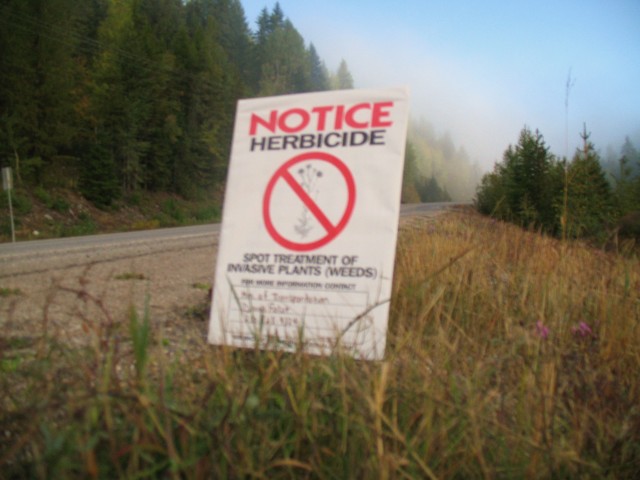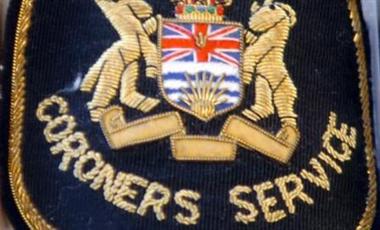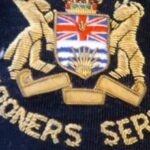Noxious Weeds Take Note: Your days are numbered
If you’ve driven or walked by the junction of Highway 3B and Kirkup Avenue this past week, you might have noticed some signs along the side of the road warning that herbicides have been applied to some invasive weeds happily growing on the verge.
The signs themselves contain quite a bit of information, if you get close enough to inspect one. They liststhe herbicides used and indicate that the ground upon which they stand has been used for spot treatments of Spotted Knapweed, an invasive weed you might have seen quite a bit of this year. Knapweed sports a lovely purple flower, much like the thistle’s, atop a spindly, somewhat prickly stem. They are notoriously hard to kill and they are also very difficult to yank, as this reporter found out the hard way during some routine yard maintenance this summer.
The herbicide spraying was done by the Ministry of Transportation on September 14, and the sign lists no fewer than five chemicals used: Tordon™ 22K (picloram), Grazon™ (picloram + 2, 4D), Roundup (glyphosphate), Transline® (clopyralid), and Milestone® (aminopyralid). The sign warns passers-by to “avoid skin contact with treated vegetation for 24 hours after application.”
Tordon™ is manufactured in Calgary by Dow AgroSciences and is used “for the control of deep-rooted perennial and biennial weeds on rangeland, permanent grass pastures and non-cropland in Western Canada.” It sports a big poison symbol on its label, is toxic to aquatic life, and can cause skin irritation in humans.
Grazon™ is manufactured by the same company, but is used to improve “grass production through the removal of a wide range of competitive broadleaf weeds.” Also sporting a poison symbol on its label, the manufacturers assure us that “a successful application of Grazon will provide at least two years of improved grass production.” The label comes with six warnings about skin contact and inhaling the mist and other potential dangers.
Roundup is a common household weed killer available at retail outlets that sell gardening supplies and equipment, but it is not without its fair share of controversy. It has been banned in Ontario (except for golf course applications) and Quebec, and according to one site I read, there is a movement in British Columbia to ban it, too.
Transline® is manufactured also by Dow AgroSciences, and their web site says that it “controls some of the toughest invasive species, including mimosa, redbud, thistle, locust, yellow starthistle, kudzu and knapweed. Transline affects all parts of the target plant, including the roots, taking out species that establish extensive root systems.” There is no poison symbol on its label.
Finally, Milestone® – again produced by Dow AgroSciences. Product information on the Dow AgroSciences site says that this herbicide is “designed and developed specifically for use on rangeland and pastures to control noxious and invasive broadleaf species and other problem weeds.” Those weeds include Spotted Knapweed. There is only a “caution” on the label and product information states that Milestone is “non-volatile” and has “very low toxicity to birds, fish, mammals, and aquatic invertebrates.”
It should be noted that in the immediate vicinity of the herbicide signs on the side of the highway, there was not very much Spotted Knapweed growing. In fact, there were rather huge swaths of Common Tansy a few steps beyond the verge, but those did not appear to be targeted by this spraying project.
A call was made to the Ministry of Transportation official in charge of the spraying, but the call was not returned by press time.
Do you agree with herbicides being sprayed along the highway?
Stay tuned for an upcoming article on invasive weeds in Rossland containing information from the Central Kootenay Invasive Plant Committee.
























